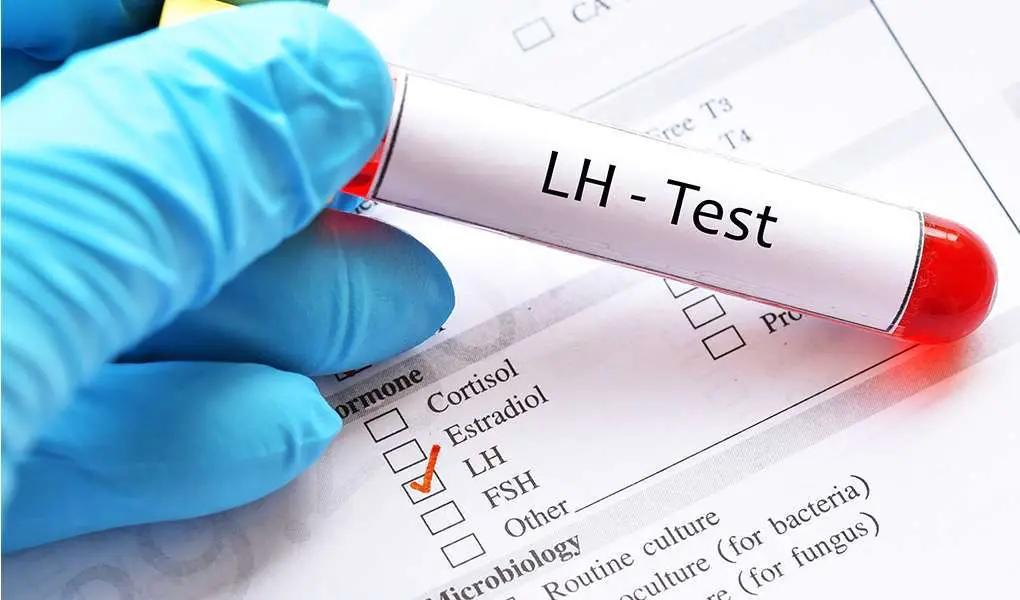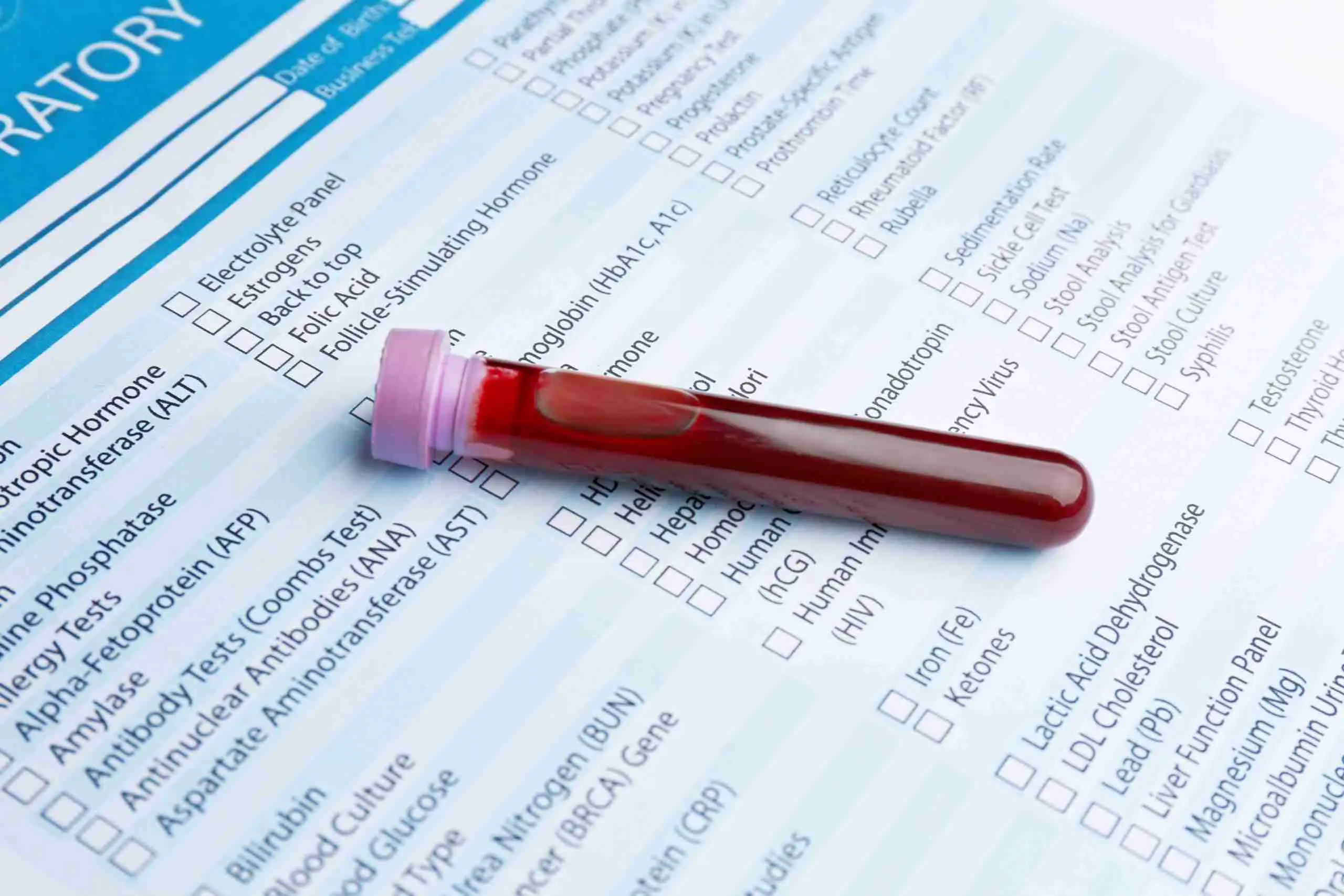Many women search for answers about menopause blood test results, how to read, especially when brain fog, mood swings, or irregular periods raise questions about hormone changes. Menopause blood tests measure hormone changes like FSH, LH, and estrogen to assess transition stages.
Results can fluctuate in perimenopause, so they may not confirm menopause on their own. Typical findings include FSH above 40 mIU/mL and estradiol below 30 pg/mL, though lab ranges differ.
Doctors combine test results with symptoms such as hot flashes or irregular periods to guide care and next steps. At SensIQ, Dr. Luke Barr, Chief Medical Officer, emphasizes that understanding test results requires both science and context.
This article explains how common hormones are measured, how results can be interpreted, and why medical guidance remains essential.
Key Takeaways
- Menopause blood test results: how to read begins with understanding that FSH and LH levels typically rise while estrogen and progesterone fall.
- Blood tests can provide guidance, but results often fluctuate during perimenopause and may not confirm menopause on their own.
- Typical ranges include estradiol below 30 pg/mL and FSH above 40 mIU/mL in post menopausal women, though labs may vary.
- Doctors interpret hormone results together with menopausal symptoms such as hot flashes, irregular periods, and vaginal dryness to give accurate advice.
- Non-hormonal support, lifestyle changes, and medical consultation remain essential next steps for managing symptoms and maintaining health.
Blood Tests for Menopause
What Blood Test Results Detect Menopause
A menopause blood test usually measures several hormones that shift as ovarian function declines. The most common hormones tested include follicle-stimulating hormone (FSH), luteinizing hormone (LH), estradiol, and progesterone.
Rising levels of FSH and LH with declining estrogen can suggest the transition to menopause¹. These tests can help distinguish menopause from other health conditions, such as thyroid issues or polycystic ovary syndrome (PCOS).
Understanding Blood Test Results for Menopause
Blood test results provide useful data, but they are only one piece of the puzzle. Hormonal imbalances can fluctuate, meaning results may not always align with menopausal symptoms.
For example, a woman may have irregular periods and symptoms like hot flashes even if her blood levels appear within the normal range. This is why test results should always be interpreted alongside a patient’s medical history and physical symptoms.
Key Hormones and Levels

Estradiol: How to Read Results
Estradiol is the main form of estrogen in women. Declining estrogen levels often contribute to menopausal symptoms such as vaginal dryness and mood swings.
When estradiol drops, it signals that the ovaries are producing less estrogen, a hallmark of perimenopause or post menopausal stages. Interpreting estradiol levels helps identify changes in ovarian function, but should be balanced with other hormones tested.
Estrogen Levels in Menopause
Estrogen levels fall as women move from perimenopause into post menopausal stages. In early reproductive years, estradiol – the main form of estrogen – may range from about 30 to 400 pg/mL depending on the menstrual cycle phase¹. During menopause, average levels typically drop to below 30 pg/mL.
These lower levels explain many menopausal symptoms such as hot flashes, mood swings, and vaginal dryness. It is important to remember that laboratory reference ranges differ, and small amounts of estrogen may still circulate after menstrual periods stop. Charts provide guidance, but interpretation should always be paired with symptoms and medical history.
FSH and LH: How to Interpret Results
Both follicle-stimulating hormone FSH and luteinizing hormone LH increase as the ovaries produce less estrogen and progesterone. Elevated levels of FSH combined with low estrogen are strong markers of menopause².
The FSH test is frequently ordered when a woman reports irregular periods, hot flashes, or difficulty sleeping. Dr. Luke Barr highlights that while these hormones rise, they can also fluctuate day to day, making repeated testing sometimes necessary.
FSH Levels Menopause
FSH levels rise as women move from perimenopause into post menopausal stages. In early reproductive years, FSH may range from about 4 to 20 mIU/mL depending on the menstrual cycle phase¹. During menopause, average levels typically increase to above 40 mIU/mL².
Progesterone
Progesterone levels naturally decline with menopause. When menstrual periods become less frequent, progesterone decreases because ovulation no longer occurs regularly.
Low progesterone, combined with low estrogen, explains symptoms such as mood swings and hormonal imbalances. Though not always measured, progesterone adds context when reviewing menopause blood test results.
How to Read Hormone Blood Test Results

Normal Ranges in Female Hormone Tests
Learning how to read a hormone blood test results begins with understanding the typical ranges of each hormone. These ranges shift significantly as women move from reproductive years into perimenopause and finally into post menopausal stages.
- Estradiol (estrogen levels): In reproductive years, estradiol may range from about 30 to 400 pg/mL depending on the menstrual cycle. During menopause, values usually fall to below 30 pg/mL. This drop helps explain symptoms like hot flashes, vaginal dryness, and mood swings³.
- FSH and LH: Follicle-stimulating hormone (FSH) and luteinizing hormone (LH) are usually low before menopause. As ovarian function declines, levels rise. FSH often climbs above 40 mIU/mL in menopause, while LH also increases, reflecting the reduced ovarian response.
- Progesterone: Once ovulation stops in menopause, progesterone levels drop sharply and typically remain below 1 ng/mL. This decline contributes to irregular periods during perimenopause and eventually the complete end of menstrual periods in post menopausal women.
These values provide useful guidance, but they are not absolute. Laboratories may use different testing methods, meaning reference numbers can vary. In addition, small amounts of hormones may still be present even after menopause.
For this reason, results should always be interpreted in the context of menopausal symptoms and overall health conditions, rather than numbers alone.
Why Blood Test Results Can Be Inconclusive
Blood tests capture hormone levels at one moment in time. Fluctuations are common during perimenopause, so results may appear inconsistent.
For example, a woman may show near-normal estrogen and progesterone levels even while experiencing symptoms like hot flashes or irregular periods. This is why doctors often rely on both test results and clinical presentation.
Why Results Differ Between Women
Every woman experiences menopause differently. Genetics, lifestyle, health conditions, and even adrenal glands all influence blood levels. Women with PCOS may show unusual hormone patterns, while those on certain medications may also see altered readings.
Understanding these differences prevents misinterpretation and supports more personalized care.
Do You Always Need a Menopause Blood Test?
No. Most women don’t need a blood test because age and common symptoms like hot flashes or missed periods are enough for diagnosis.
When Testing Helps
Blood testing is valuable when symptoms overlap with other conditions. For example, thyroid disease or PCOS can cause menstrual irregularities similar to menopause. Tests can also help if symptoms are severe or appear earlier than expected. In such cases, results clarify whether menopause or another condition is the cause.
When Symptoms Are Enough
Often, symptoms like hot flashes, mood swings, or vaginal dryness tell the story without the need for testing. Many clinicians diagnose menopause based on a pattern of symptoms and age. Post menopausal women with ongoing symptoms may still benefit from a medical evaluation to rule out other hormonal imbalances.
Next Steps After Reviewing Your Results
Talking With Your Doctor
Always share results with a healthcare provider. Dr. Luke Barr notes that interpretation requires considering age, symptoms, and medical history. Even if blood levels suggest menopause, other health conditions may need attention. Professional guidance ensures accuracy and safety.
Safe, Non-Hormonal Support Options
For women seeking support, non-hormonal approaches may provide relief. Lifestyle strategies, such as regular exercise, balanced nutrition, and stress management, can help alleviate symptoms. Evidence suggests that certain nutrients may support brain and mood health in midlife women, though results vary and should not replace medical care.
Quick FAQs on Menopause Blood Tests
Do blood tests always confirm menopause?
Not always. Blood test results can be inconclusive, especially during perimenopause when hormone levels fluctuate from day to day. A woman may have menopausal symptoms like hot flashes or irregular periods even if her blood levels appear within normal ranges.
This is why doctors usually look at both test results and symptoms together before making a diagnosis.
Which hormones are tested?
The main hormones tested are estradiol, follicle-stimulating hormone (FSH), luteinizing hormone (LH), and progesterone. These values help create a picture of ovarian function. In some cases, additional hormones may be checked, such as thyroid hormones or androgens, to rule out other health conditions that mimic menopausal symptoms.
Why do ranges vary?
Hormone ranges are not the same across all laboratories. Results can vary depending on the testing method, the timing of the test within the menstrual cycle, and individual health factors such as stress or medication use.
Even small amounts of hormones may remain in the blood after menopause, which means test numbers should always be reviewed alongside clinical history.
When should you consider a blood test?
Testing may help if symptoms appear earlier than expected, if there is uncertainty between perimenopause and other conditions like PCOS, or if confirmation is needed before certain treatments. Still, many women are diagnosed based on symptoms alone, without the need for repeated blood draws.
References
- National Institute for Health and Care Excellence. (2024, November 7). Menopause: identification and management (NG23) — Recommendations. https://www.nice.org.uk/guidance/ng23/chapter/recommendations
- ARUP Laboratories. (n.d.). Follicle Stimulating Hormone, Serum — Reference interval. https://ltd.aruplab.com/Tests/Pub/0070055
- Mount Sinai. (n.d.). Estradiol blood test — Normal results. https://www.mountsinai.org/health-library/tests/estradiol-blood-test


